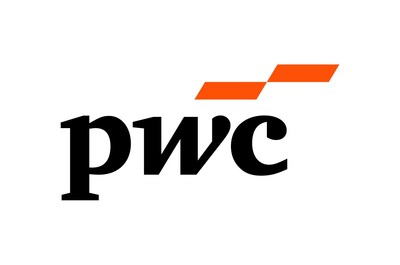- Compared to infrequent users of GenAI at work, daily users are much more likely to have seen tangible benefits in the last year to productivity (92% v 58%), job security (58% v 36%), and salary (52% v 32%)
- Yet only 14% of respondents are using GenAI daily, and only half (54%) say they have used AI for their role in the past 12 months
- The upskilling divide: just 51% of non-managers feel they have the resources needed for learning and development – compared to 72% of senior executives
- 55% of the global workforce is experiencing financial strain, up from 52% in 2024, with a third feeling overwhelmed at least once a week
LONDON, Nov. 12, 2025 /PRNewswire/ — Workers who used generative AI (GenAI) daily over the last year report being more productive, and seeing higher job security and pay, according to PwC’s 2025 Global Workforce Hopes & Fears Survey, released today.

The survey, which interviewed nearly 50,000 workers globally across 48 major economies and 28 sectors, shows that compared to infrequent users, daily users are more likely to have seen tangible benefits to productivity (92% v 58%), job security (58% v 36%), and salaries (52% v 32%). They are also more likely to be optimistic about the impacts of AI across these and every other benchmark surveyed.
However, the survey finds that organisations can do more to help workers develop skills and thrive amidst a challenging economy. Just 51% of non-managers feel they have access to the learning and development opportunities they need – compared to 66% of managers and 72% of senior executives.
Pete Brown, Global Workforce Leader, PwC, said:
“Employees using AI every day are reaping the rewards – higher productivity, greater job security and better pay. But to scale these benefits, businesses must go beyond training. Work itself needs to be redesigned and the human–machine partnership redefined. Getting this right will determine whether GenAI becomes a true engine of growth and inclusion, or a missed opportunity.”
The survey also finds that daily GenAI users are far more optimistic about the future of their roles over the next 12-months (69%) relative to infrequent (51%) and non-users (44%).
But while 54% of workers say they have used AI for their role in the past 12 month – frequent utilisation rates remain low, suggesting ample opportunity for growth and access to the tangible benefits. Only 14% of respondents are using GenAI daily, a small rise from the 12% who said as such in 2024. An even smaller proportion (6%) say they are using agentic AI daily.
The upskilling divide: non-managers are falling behind senior executives in their growth opportunities and outlook
While organisations are investing in their upskilling programmes to contend with new and emerging technologies, the survey finds employer upskilling efforts are uneven. Just 51% of non-managers feel they have the resources they need for learning and development, compared to 66% of managers and 72% of senior executives.
Based on current trends, those who are already using AI look set to extend their lead over the rest of the workforce. While 75% of daily users of AI feel they have the resources they need for learning and development, only 59% of infrequent users do.
There are also marked differences in the extent to which workers feel part of a culture that supports learning. Overall, 54% of workers say their team treats failure as an opportunity to learn and grow, but this rises to 65% in the technology sector, compared to just 47% in transport and logistics.
Share of global workforce experiencing financial strain rises – mounting pressure on employee motivation
While 70% of respondents say they feel satisfied with their work at least once a week, there are also signs of stress. Only 53% of the global workforce feels strongly optimistic about the future of their roles, with non-managers (43%) trailing far behind senior executives (72%). Trust in top management is also divided – with only 64% noting they understand their organisation’s goals. These percentages are lower among non-managers and Gen Z.
55% of the global workforce is experiencing financial strain, up from 52% in 2024. Just over one-third (35%) feel overwhelmed at least once a week, rising to 42% among Gen Z. Fewer than half (43%) received a pay rise in the last year, with less than one-fifth (17%) received a promotion. Perhaps reflecting a tougher economic context, intention to seek pay rises and promotions has fallen year on year, from 43% to 37% and from 35% to 32% respectively.
However, organisations that do secure the buy-in of their teams stand to gain significantly. Workers who feel strongly aligned with leadership goals are 78% more motivated than those who report the least alignment.
Nicki Wakefield, Global Clients & Industries Leader, PwC, said:
“GenAI is already paying off for those who use it every day – with workers reporting significant boosts to productivity, job security and pay – yet only 14% are using it daily. This isn’t just a technology story; it’s a people story. Workers thrive when they understand the plan – alignment with leadership sees motivation rise by 78%. In a year of rising financial strain and many feeling overwhelmed, leaders must redesign work and provide clarity and confidence: simple everyday use cases, strong guardrails, and the skills, trust and support that turn AI from hype into real help.”
Notes to Editors
About PwC’s 2025 Global Workforce Hopes & Fears Survey
PwC surveyed 49,843 workers across 48 countries and regions and 28 sectors from 7 July through 18 August 2025. The figures in this report are weighted proportionally to each country’s working population’s gender and age distribution, so workers’ views are broadly representative across all major regions.
About PwC
At PwC, we help clients build trust and reinvent so they can turn complexity into competitive advantage. We’re a tech-forward, people-empowered network with more than 364,000 people in 136 countries and 137 territories. Across audit and assurance, tax and legal, deals and consulting, we help clients build, accelerate, and sustain momentum. Find out more at www.pwc.com.
SOURCE PwC



